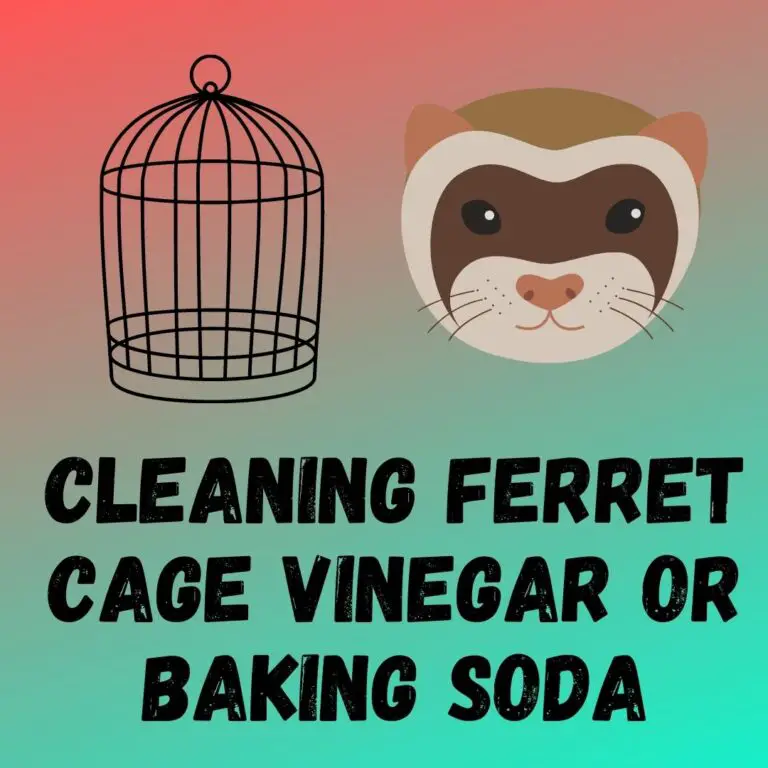
As a responsible ferret owner, it’s natural to want to keep your furry friend safe and healthy. But what happens when your ferret gets a minor cut or scrape? Can you reach for the Neosporin in your medicine cabinet? In this article, I’ll address the burning question: can you put Neosporin on a ferret?
When it comes to treating wounds on our beloved pets, it’s important to consider their unique physiology. Ferrets have delicate skin and a tendency to lick themselves, which can lead to ingesting harmful substances. In this article, I’ll delve into the potential risks and benefits of using Neosporin on your ferret’s wounds, and whether there are alternative options that may be more suitable for their specific needs.
So, if you’ve ever wondered if Neosporin is safe for your ferret or if there are better alternatives out there, keep reading. I’ll provide you with the information you need to make an informed decision and ensure the well-being of your furry companion.
The Physiology of Ferrets
As I mentioned earlier, ferrets have a unique physiology that sets them apart from other animals. Understanding their physiology is essential when considering whether it’s safe to use Neosporin on their minor cuts or scrapes.
Firstly, ferrets have delicate skin. Their skin is thin and more sensitive compared to other pets like dogs or cats. This means that they are more prone to irritation or reactions from topical substances. It’s important to use products that are specifically formulated for their sensitive skin.
Secondly, ferrets have a natural tendency to lick themselves. Licking is a common grooming behavior for them, and it’s how they keep themselves clean. However, this behavior can also pose a potential risk when applying ointments or creams. Ferrets may ingest the product if they lick the treated area, which can lead to adverse effects on their digestive system.
In addition to their delicate skin and licking behavior, ferrets also have a higher body temperature than humans. Their normal body temperature ranges from 100 to 104 degrees Fahrenheit. This means that any inflammation or infection can develop rapidly in their warm environment. Therefore, it’s crucial to promptly address any minor cuts or scrapes to prevent further complications.
Considering these factors, it’s important to approach the care of a ferret’s minor cuts or scrapes with caution. While Neosporin is a widely used topical ointment for humans, it may not be the best choice for ferrets. There are alternative options available that are specifically designed for ferret care, which may be more suitable for their unique needs.
Now that we understand the physiology of ferrets, let’s explore the potential risks and benefits of using Neosporin on them in the following section.
Understanding the Risks of Neosporin
When it comes to the well-being of our furry friends, it’s essential to understand the potential risks that certain products can pose. Neosporin, a popular over-the-counter antibiotic ointment, is often used by humans to treat minor cuts and scrapes. However, can you put Neosporin on a ferret? Let’s delve into the topic and explore the risks.
- Toxicity concerns: Neosporin contains ingredients such as neomycin, polymyxin B, and bacitracin, which are generally safe for humans. However, these ingredients can be harmful to ferrets if ingested or absorbed through their delicate skin. Ferrets are notorious for grooming themselves, and this can lead to them licking off the ointment, increasing the risk of toxicity.
- Skin irritation: Ferrets have sensitive skin, and the application of Neosporin may cause irritation or an allergic reaction. Their skin is thinner and more permeable than that of humans, making it more susceptible to adverse effects from certain substances.
- Temperature regulation: Another important factor to consider is that ferrets have a higher body temperature than humans. Neosporin is formulated for human use, and its effectiveness might be compromised due to the elevated temperature of a ferret’s body. Using a product specifically designed for ferret care can ensure better outcomes.
Given these risks and considerations, it’s prudent to exercise caution when pondering whether to use Neosporin on a ferret’s minor cuts or scrapes. While Neosporin may work well for humans, it may not be the best choice for our ferret companions.
Alternative options: There are alternative options available that are specifically formulated for the care of ferret wounds. These products take into account the unique physiology and needs of ferrets, reducing the risk of potential complications. Consulting with a veterinarian is advisable to determine the most suitable course of action for treating your ferret’s cuts or scrapes.
Remember, the health and safety of our furry friends should always be our top priority. By understanding the risks involved and exploring alternative solutions, we can provide the best care for our beloved ferrets.
Can You Use Neosporin on Ferret Wounds?
When it comes to treating ferret wounds, Neosporin is a popular choice among some pet owners. However, it’s important to consider the unique physiology of ferrets before using this product on them.
One of the main concerns with using Neosporin on ferret wounds is the ingredients it contains. Neosporin typically contains antibiotics like neomycin, polymyxin B, and bacitracin. While these ingredients may be safe for humans, they can be harmful to ferrets if ingested or absorbed through their delicate skin. Ferrets have a higher body temperature than humans, which can affect the effectiveness and safety of certain medications, including Neosporin. Therefore, it’s vital to exercise caution and consult with a veterinarian before using it on your ferret.
Additionally, ferrets have sensitive skin, which can make them more prone to adverse reactions. Using Neosporin, with its potential side effects, may further irritate their skin and lead to additional discomfort. It’s crucial to prioritize the health and well-being of your ferret and seek alternative options that are specifically designed for ferret care.
Consulting with a veterinarian is always the best course of action when it comes to treating wounds on your ferret. They have the knowledge and expertise to guide you through the appropriate steps to take. They may recommend specific wound ointments or treatments that are safe and effective for ferrets.
While Neosporin may be a common go-to for human wounds, it’s not advisable to use it on ferrets without proper professional guidance. Ensure the health and safety of your furry friend by consulting with a veterinarian and exploring alternative options specifically designed for ferret care. Your veterinarian will be able to provide you with the best advice and treatment plan for your ferret’s wound care needs.
Alternative Options for Treating Ferret Wounds
Now that we know Neosporin may not be suitable for ferrets, let’s explore some alternative options for treating wounds on these adorable creatures. It’s important to choose products specifically designed for ferret care to ensure their safety and well-being. Here are a few options to consider:
- Ferret-Safe Antiseptics: There are antiseptics available in the market specifically formulated for ferrets. These products are designed to promote healing and prevent infection without causing harm to your ferret. Make sure to read the product labels and follow the instructions for proper application.
- Chlorhexidine Solution: Chlorhexidine is an antiseptic solution commonly used in veterinary medicine. It is effective in killing bacteria and preventing infection. Consult your veterinarian for guidance on the appropriate concentration and application method when using chlorhexidine for wound care.
- Hypoallergenic Wound Ointments: Look for hypoallergenic ointments that are gentle and safe for your ferret’s skin. These ointments typically contain soothing ingredients and help to keep the wound clean and moisturized while promoting healing.
- Saline Solution: Saline solution is a mild and gentle option for cleansing and flushing wounds on ferrets. It helps to remove debris and bacteria without causing further irritation. You can easily make a saline solution at home by mixing salt and water according to the proper ratio.
Remember, consulting with a veterinarian is crucial when it comes to proper wound care for your ferret. They will be able to assess the severity of the wound, provide appropriate treatment recommendations, and ensure the overall health and well-being of your furry friend.
Using alternative options specifically designed for ferret care will help ensure their safety and promote faster healing. Keep in mind that each ferret is unique, and what works for one may not work for another. Always monitor the wound and your ferret’s behavior, and if there are any concerns or signs of infection, seek professional veterinary attention immediately.
So, let’s prioritize the health and well-being of our ferret companions by opting for safe and effective wound care products designed specifically for them.
Conclusion
It is vital to prioritize the health and well-being of our beloved ferrets by using safe and effective wound care products specifically designed for them. As we have discussed, Neosporin may pose potential risks to ferrets due to its ingredients and the unique physiology of these small creatures. Their sensitive skin and higher body temperature can affect the effectiveness of Neosporin and may even lead to further irritation.
To ensure proper wound care for our ferrets, it is crucial to consult with a veterinarian. They can provide expert guidance and recommend alternative options that are safe and suitable for ferret care. Ferret-safe antiseptics, chlorhexidine solution, hypoallergenic wound ointments, and saline solution are some of the alternatives worth exploring.
Remember to monitor the wound and your ferret’s behavior for any signs of infection. Regular check-ups with a veterinarian will ensure that the wound is healing properly and that your furry friend is on the path to recovery.
By understanding the unique needs of ferrets and seeking professional guidance, we can provide them with the best possible care and support their overall health and well-being.






